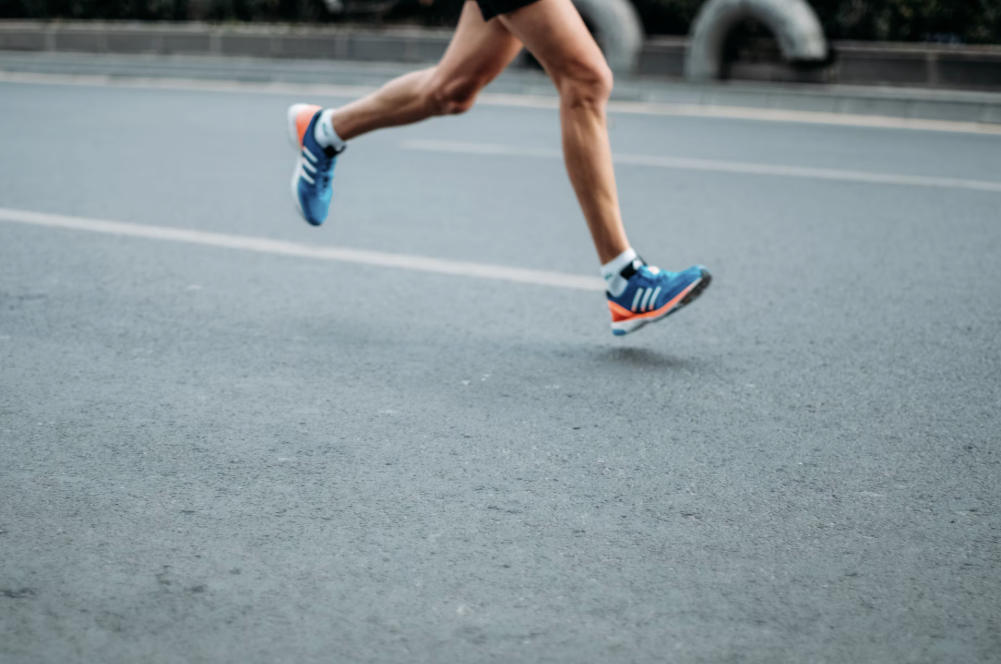ベアフットシューズは、身体にさまざまな影響を与えることが研究で示されています。これらのシューズは、従来のランニングシューズと比較して、ランニングのバイオメカニクスに変化をもたらします。
バイオメカニクスの変化
- 足の接地とストライド: 裸足や裸足に近いシューズで走ると、足はより前方に接地し、ストライドが短く、接地時間が短くなる傾向があります。また、ストライド頻度が増加します。
- 関節の動きと力: 裸足や裸足に近いシューズでは、足首のプランターフレクションが増加し、膝の屈曲が増加します。これにより、膝や足首の関節にかかる力が変化します。
- 衝撃力と圧力: 裸足でのランニングは、従来のシューズに比べて衝撃力が低く、足底圧力が異なることが報告されています。
パフォーマンスと怪我のリスク
- ランニング効率: 裸足やミニマリストシューズは、ランニング効率を向上させる可能性がありますが、これには個人差があります。
- 怪我のリスク: 裸足でのランニングは、特定の怪我のリスクを減少させる可能性がありますが、逆に他の怪我のリスクを増加させることもあります。特に、足や足首にかかる負荷が増加することがあります。
結論
裸足シューズは、ランニングのバイオメカニクスに影響を与え、特定の状況下でランニング効率を向上させる可能性がありますが、怪我のリスクも伴うことがあります。個々のランナーのニーズや体の反応に応じて、適切なシューズを選ぶことが重要です。
Perkins, K., Hanney, W., & Rothschild, C. (2014). The Risks and Benefits of Running Barefoot or in Minimalist Shoes. Sports Health, 6, 475 - 480. https://doi.org/10.1177/1941738114546846.
Squadrone, R., & Gallozzi, C. (2009). Biomechanical and physiological comparison of barefoot and two shod conditions in experienced barefoot runners.. The Journal of sports medicine and physical fitness, 49 1, 6-13 .
Franklin, S., Grey, M., Heneghan, N., Bowen, L., & Li, F. (2015). Barefoot vs common footwear: A systematic review of the kinematic, kinetic and muscle activity differences during walking.. Gait & posture, 42 3, 230-9 . https://doi.org/10.1016/j.gaitpost.2015.05.019.
Paquette, M., Zhang, S., & Baumgartner, L. (2013). Acute effects of barefoot, minimal shoes and running shoes on lower limb mechanics in rear and forefoot strike runners. Footwear Science, 5, 18 - 9. https://doi.org/10.1080/19424280.2012.692724.
Sinclair, J., Greenhalgh, A., Brooks, D., Edmundson, C., & Hobbs, S. (2013). The influence of barefoot and barefoot-inspired footwear on the kinetics and kinematics of running in comparison to conventional running shoes. Footwear Science, 5, 45 - 53. https://doi.org/10.1080/19424280.2012.693543.
Thompson, M., Seegmiller, J., & McGowan, C. (2016). Impact Accelerations of Barefoot and Shod Running. International Journal of Sports Medicine, 37, 364 - 368. https://doi.org/10.1055/s-0035-1569344.
Lieberman, D. (2012). What We Can Learn About Running from Barefoot Running: An Evolutionary Medical Perspective. Exercise and Sport Sciences Reviews, 40, 63–72. https://doi.org/10.1097/JES.0b013e31824ab210.
Pal, M., Maity, A., Chauhan, B., Juneja, H., & Kumar, M. (2024). Comparative Analysis of Kinetic Responses and Injury Risk During Landing from 45 cm Height: A Study of Barefoot vs. Sports Shoes Conditions. International Journal of Physical Education, Fitness and Sports. https://doi.org/10.54392/ijpefs2437.
Richert, F., Stein, T., Ringhof, S., & Stetter, B. (2019). The effect of the heel-to-toe drop of standard running shoes on lower limb biomechanics. Footwear Science, 11, 161 - 170. https://doi.org/10.1080/19424280.2019.1630016.
Sun, X., Lam, W., Zhang, X., Wang, J., & Fu, W. (2020). Systematic Review of the Role of Footwear Constructions in Running Biomechanics: Implications for Running-Related Injury and Performance.. Journal of sports science & medicine, 19 1, 20-37 .
